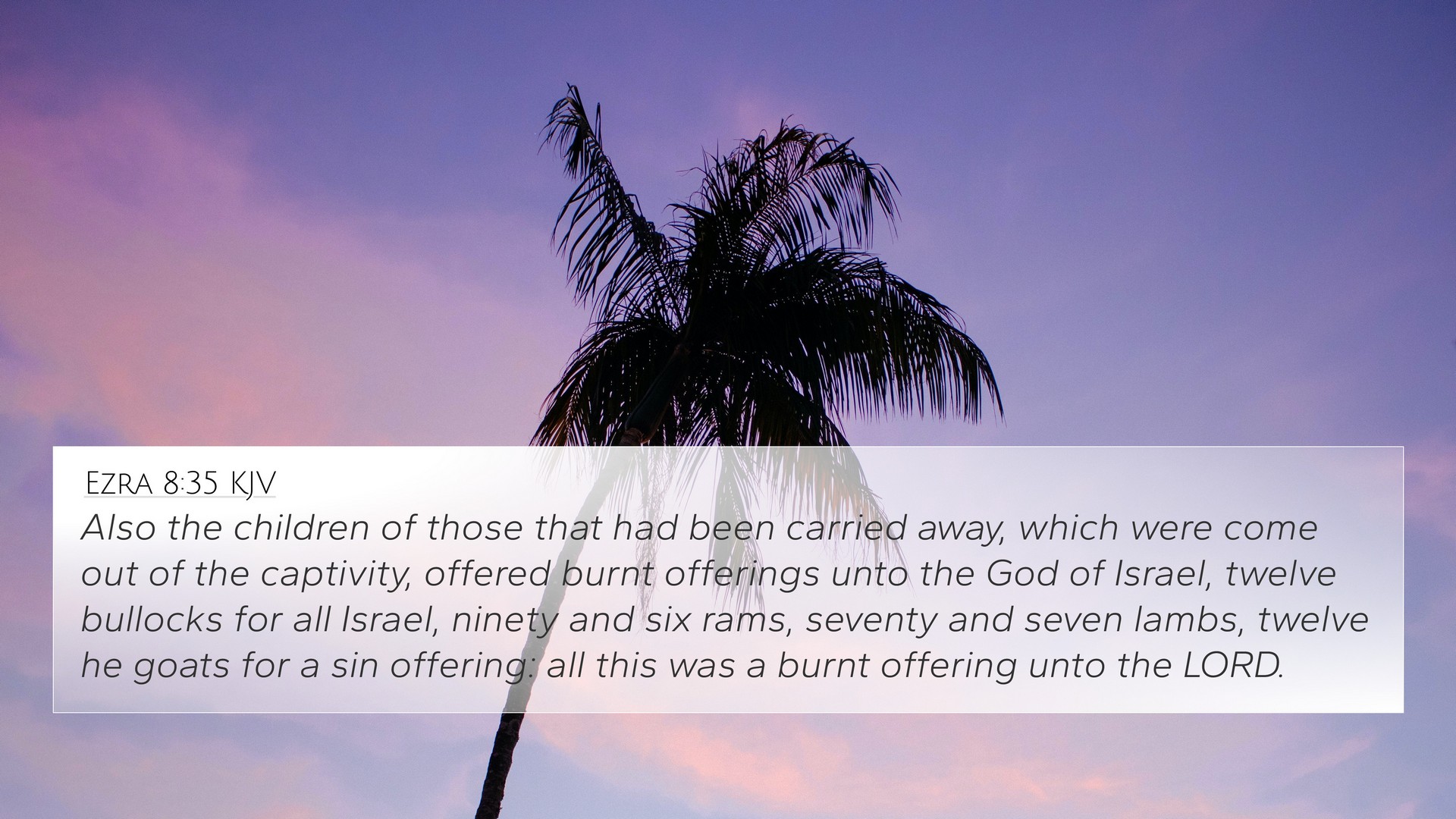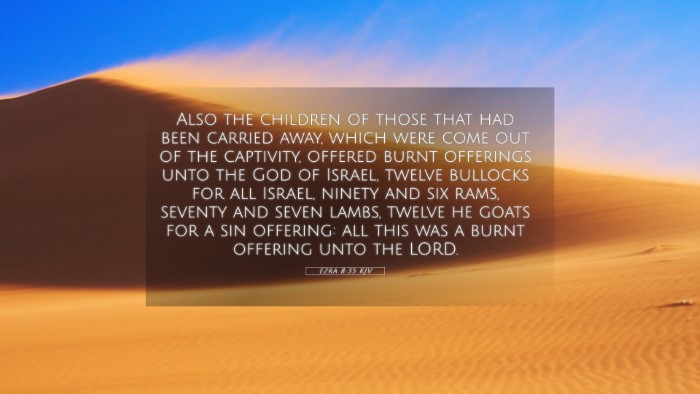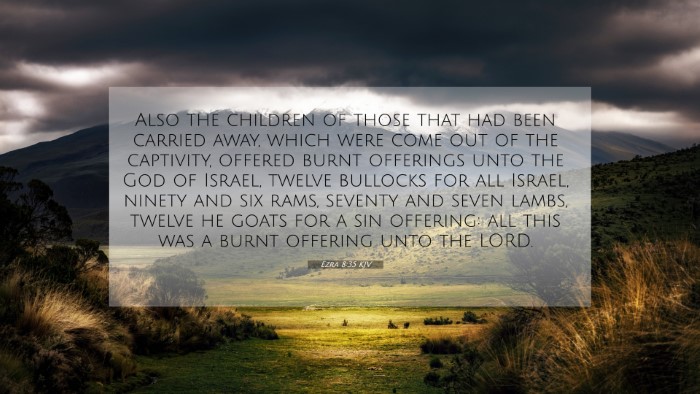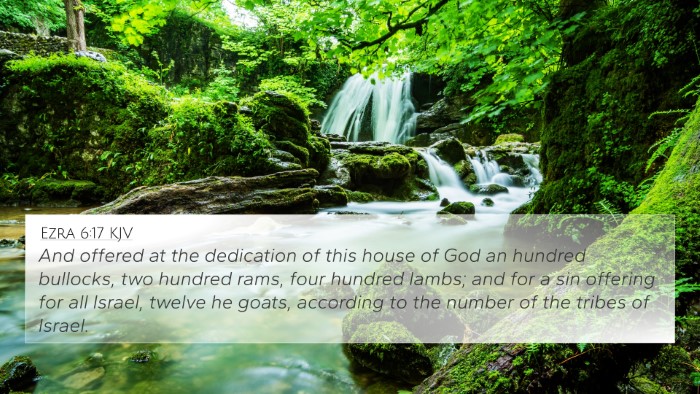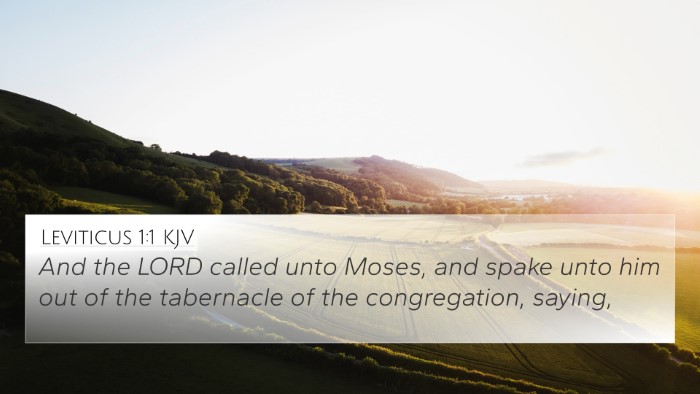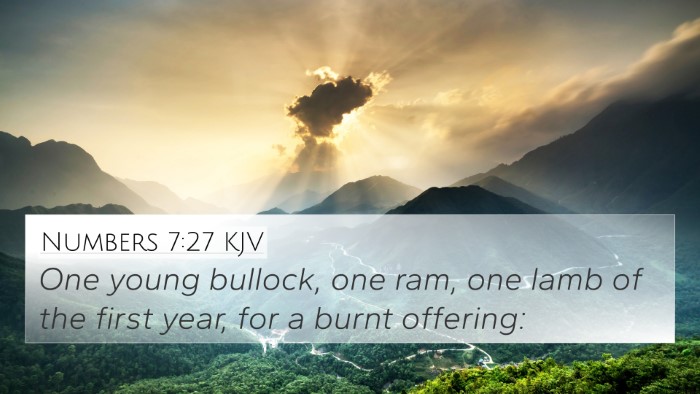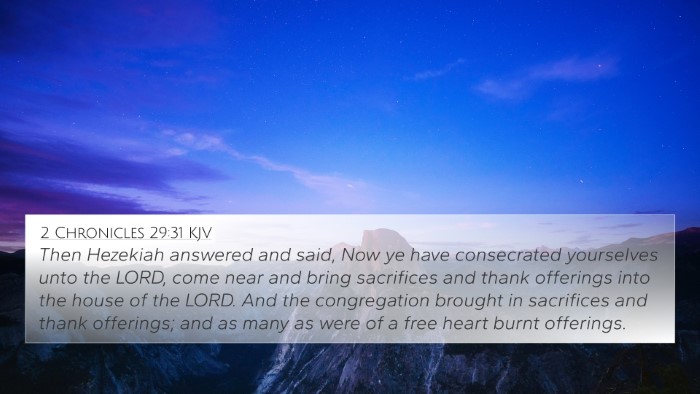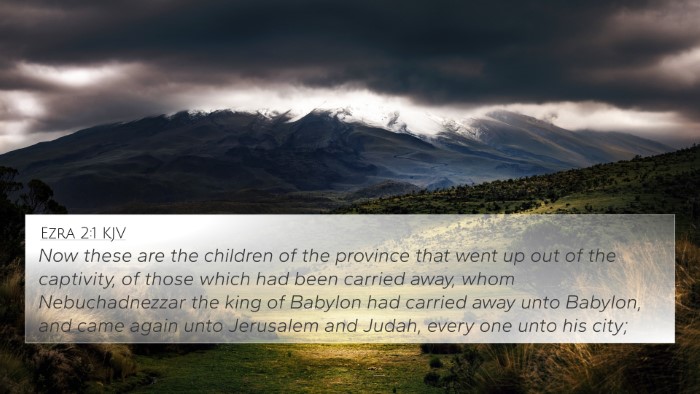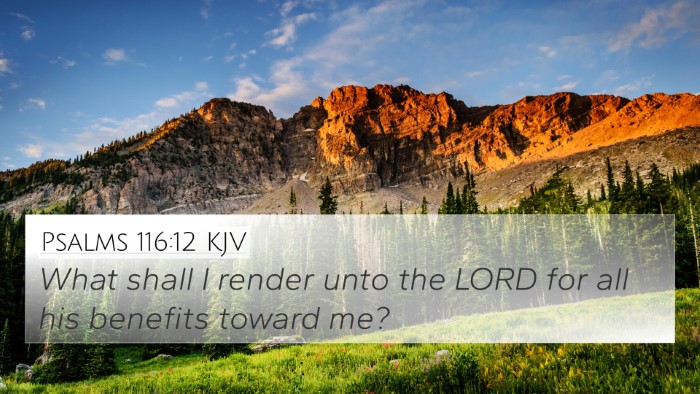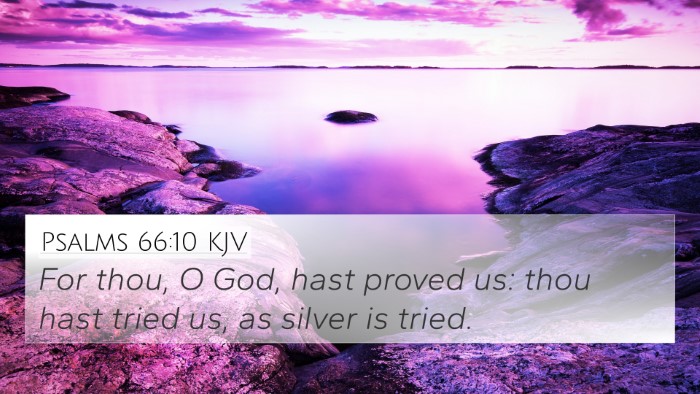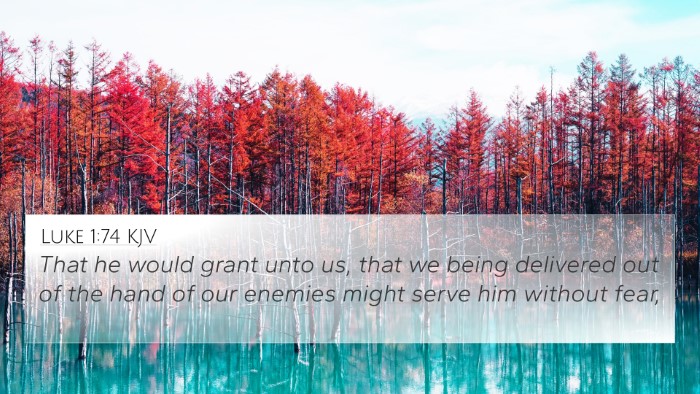Understanding Ezra 8:35
Ezra 8:35 states: "Also the children of those who had been carried away captive, who had come out of the captivity, offered burnt offerings to the God of Israel, twelve bulls for all Israel, ninety-six rams, seventy-seven lambs, and, as a sin offering, twelve male goats. All this was a burnt offering to the Lord."
Summarized Meaning
This verse emphasizes the response of the returning exiles to the Lord after their deliverance from Babylonian captivity. Their act of offering sacrifices is a testament to their gratitude and acknowledgment of God's mercy. They demonstrated devotion, unity through the offerings, and they recognized their sinfulness while seeking atonement.
Key Insights
- Symbolism of Sacrifices: Each type of offering made has significant symbolism. The burnt offerings symbolize complete surrender and devotion to God.
- Number of Sacrifices: The specific numbers in the offerings—twelve bulls, ninety-six rams, etc.—indicate not only the seriousness of their repentance but also the unity of the tribes of Israel.
- Collective Atonement: The offering made was for all Israel, highlighting a communal approach to atonement, an important aspect of their restored identity.
- Restoration and Gratitude: This act of sacrifice marks both a restoration to their homeland and a recommitment to their covenant with God.
Cross-References and Related Verses
Ezra 8:35 connects with several significant Bible passages, enhancing our understanding through cross-referencing biblical texts:
- Leviticus 1:3-9: Instructions regarding burnt offerings, outlining their importance in worship.
- 2 Chronicles 29:31: Assembled people bringing offerings in dedication of the temple, mirroring the collective spirit found in Ezra.
- Psalms 51:17: God desires a broken spirit; a broken and contrite heart, emphasizing true repentance in sacrifices.
- Romans 12:1: Presenting one’s body as a living sacrifice speaks to the ongoing call for devotion.
- Hebrews 10:12-14: The ultimate sacrifice in Christ, illuminating the purpose of Old Testament sacrificial practices.
- Isaiah 43:21: God’s people declaring His praise, reflecting the intent behind their offerings.
- Nehemiah 12:43: Celebrations that included offerings showcase the joy in restoration and worship.
Thematic Connections
Through a comparative study of these verses, we find thematic connections that deepen our understanding of the importance of worship, atonement, and community in the life of Israel:
- Worship and Sacrifice: The consistent need for offerings reflects a deep-seated acknowledgment of God’s sovereignty.
- Community in Faith: The collective nature of worship emphasizes unity among God’s people.
- God’s Mercy and Grace: The sacrifices point to God’s desire for relationship restoration.
Tools for Bible Cross-Referencing
For those interested in how to find cross-references in the Bible, consider utilizing the following resources:
- Bible Concordance: A helpful tool to locate verses and their connections.
- Bible Cross-Reference Guide: A structured approach to link related verses effectively.
- Cross-Reference Bible Study: Methods to deepen understanding through interconnected scripture.
- Comprehensive Bible Cross-Reference Materials: For thorough exploration of themes and topics.
Conclusion
Ezra 8:35 serves as a vital scripture that underscores the themes of gratitude, community worship, and sacrificial love towards God. By linking this verse with others, we gain a fuller perspective on the narrative of redemption and hope found throughout the Scriptures.
This method of linking Bible scriptures through comparative analysis can greatly enhance personal study or sermon preparation. It invites an exploration of how Old Testament practices inform New Testament principles of faith and worship.
